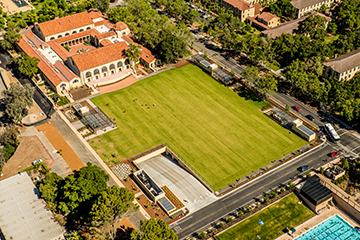 Public art outside of the Monrovia Metro Gold Line parking structure
Public art outside of the Monrovia Metro Gold Line parking structure
Parking structures are often viewed as necessary evils of pure function. If you build it, they will come –if they have a place to park. But what if we thought of parking structures as more than just a place to store a vehicle? From downtowns and medical centers to college campuses and mixed-use developments, decision makers are coming to realize that parking can either enhance or detract from the arrival experience. There are a number of best practices that can be utilized to elevate parking beyond the functional. The first of a series, this segment will focus on the integration of public art in parking structures.
Public art presents an opportunity for communities to transform parking structures from the utilitarian to an expression of place. If we think of parking as the first impression visitors have of their destination, public art can provide a way to celebrate identity and forge a more human, intimate connection with a space. For instance, when the Metro Gold Line Foothill Extension was constructed through Arcadia, Monrovia, Irwindale and Azusa, each city used public art to express its unique history at their respective station and parking structure, creating an experience for visitors at the moment of both their arrival and their departure. Seeing the value of this kind of potential, the City of Boulder is currently exploring an initiative to install public art on existing garages in an effort to create “gateways” to the city.
The same can be true for mixed use developments and campuses. A parking structure at American River College was designed to feature a mural that celebrates their student athletes. Stanford University Medical Center incorporated art and sound to create an interactive environment for parkers at one of their subterranean garages. Olympia Place, a mixed-use development in Walnut Creek, California, used a beautiful copper sphere sculpture to act as a focal point on their integrated parking structure. Through public art, these institutions are able to express their culture and make an impression in an unexpected way at the origin of the user experience – when they park their car.
Read more in this series:
Part 2: Public Spaces - Part 3: Pedestrian Connections - Part 4: Green Roofs - Part 5: First Impressions







